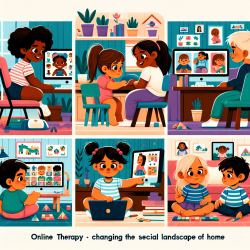Understanding Pain Perception in Vulnerable Infants
In the realm of neonatal care, the perception of pain in infants, especially those at risk for neurological impairment, is a critical aspect of healthcare. The research article "Healthcare professionals' perceptions of pain in infants at risk for neurological impairment" sheds light on the intricacies of this issue, offering insights that can significantly enhance the skills of practitioners working in Neonatal Intensive Care Units (NICUs).
Key Findings from the Research
The study involved 95 healthcare professionals, including nurses, physicians, and respiratory therapists, who assessed the pain of infants undergoing procedures in NICUs. Interestingly, the findings revealed that while professionals did not perceive pain levels to vary significantly with the infants' risk levels for neurological impairment, their views on the effectiveness of cuddling as a pain-relief intervention did change. Specifically, they rated cuddling as less effective for infants with higher neurological risks.
Implications for Practice
For practitioners, these findings underscore the importance of reassessing the methods used to evaluate and manage pain in infants with neurological risks. Here are some actionable steps:
- Enhance Training: Encourage ongoing education for healthcare professionals to better understand the nuances of pain perception in infants with neurological impairments.
- Holistic Assessment: Implement comprehensive pain assessment tools that consider both physiological and psychological aspects of pain.
- Non-Pharmacological Interventions: Explore and integrate a variety of non-pharmacological interventions, such as music therapy or gentle massage, alongside cuddling, to offer a more rounded approach to pain management.
Encouraging Further Research
The study highlights a gap between perceived pain and the effectiveness of interventions, suggesting a need for further research. Practitioners are encouraged to delve deeper into understanding how neurological risks influence pain perception and management strategies. Such research could lead to more tailored and effective care protocols for this vulnerable population.
Conclusion
Ultimately, embracing a more empathetic and informed approach to pain management in infants at risk for neurological impairment can transform care delivery. By aligning perceptions with evidence-based practices, healthcare professionals can ensure that every infant receives the compassionate care they deserve.
To read the original research paper, please follow this link: Healthcare professionals' perceptions of pain in infants at risk for neurological impairment.










